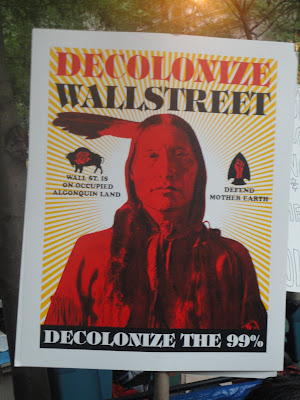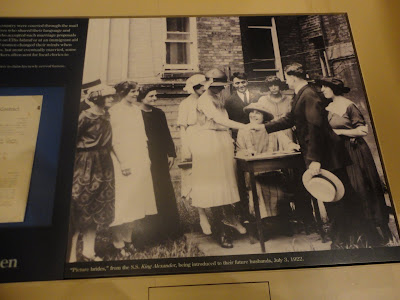Explain it to me like I'm a four-year-old, Denzel Washington's character, Joe Miller, an attorney, would say in court in the film Philadelphia. I feel like Joe Miller. Explain it to me like a four-year-old:
Why, every season, does the media subject us to another round of must have's? Wear hunter green! Houndstooth clothing. Stripes. If we must have it, they (whoever they are) should send us all one for free. Remember in the Audrey Hepburn classic Funny Face the New York fashion editor decides pink is the it color and says the American woman is standing there naked waiting for her to tell her what to wear? My must haves: an independent sense of style, financial empowerment, and caring where my clothes come from.
Why is it repulsive to wear a used sweater, but not to fork over a premium to retailers who have decided to use cheaper foreign labor instead of giving Americans jobs? Did you know in the 1960s, the United States made 98 percent of the shoes, and now imports 90 percent of them,
according to The New York Times. Clothing has similar numbers - 95 percent produced here in the sixties, five percent now, says the
Nightly Business Report on PBS. Occupy Target, Occupy H&M anyone?
Why do we give no thought to the people laboring to feed America's appetite for fast fashion? Because like a lot of the food we eat, it's just too disturbing to think about it.
I like most people went to the mall, to retailers like H&M and Payless Shoes. In the past few years I've been co-hosting seasonal clothing swaps at work. The value at retail of these clothes taken would be thousands of dollars. Financial empowerment is a great thing for women. Why would you want to pay something if you can get it for free? Explain it like I'm a four year old. While I won't say I'll "never" shop at the mall for anything, if I can get it at a swap, support a charitable thrift shop, or one of the consignment shops popping up on main streets, I will.
For our fall swap, we provided refreshments from Trader Joe's, this time - apple and pomegranate sparkling juices, maple leaf and snickerdoodle cookies, olive hummus with multi-grain pita chips, spinach dip with sesame flatbread crackers and kettle corn.
We picked three charities to donate leftovers:
CATS Resale Shop in Westwood, New Jersey, to help homeless cats and dogs,
Housing Works in New York City which assists homeless and HIV positive New Yorkers, and Cinema Verite, to benefit Process Studio Theater.
My sister donated these Coach logo bags and a Jessica Simpson bag (made in China) she no longer wanted, and some logo items from a friend (her friend was going to throw these out!) The Juicy wallet, made where else, in China.

Read the Coach label inside. This bag was handcrafted in China. So Coach is marketing their bags as a luxury item but they cut corners with cheaper labor. Their web site features glossy images of New York. Why not any of their Chinese factory?

Who is ready for hot cocoa weather? I am looking at this photo. And how cute is the child's snowsuit!

I was so excited someone brought a bag of clothes from her son. A lot were taken.

I got what would have cost several hundreds of dollars at retail for free at the swap. Among the items not pictured: brown Steve Madden shoes for me, Bosse sunglasses with multiple shades for my boyfriend Steve, an H&M scarf and a bracelet for my mom and a BCBG wrap dress for my sister. Other finds:
Banana Republic vest, made in China, and scarf, made in China, brand unknown. The vest is one of my favorite finds, and something I never would have shopped for. That's the fun thing about the swaps, and hearing a coworker say she's happy someone could use it. I'll take it with me on vacation...with all the money I save with frugal living, I can pay for my two-week trips outright.

Style & Co. top, made in India.

Liz Claiborne LizSport sky blue sweater, knitted in Taiwan, finished in China.

Scarf (so perfect for the fall!), made in China, label unknown, and bag, country of origin and label unknown. Yeah for no logos!
My rule on leather as a vegetarian is it's okay if it's secondhand, but I really try not to buy new. It's a personal decision.

I supplement my outfits with thrifted finds, like the American fashion icon: blue jeans. These, Levi Strauss & Co. may have San Francisco on their label, but inside: made in Mexico (
the company has a shaky labor history). Both from
Our Thrift Shop in Westwood, New Jersey, which benefits a local arts school. Left pair, $6, right pair, purchased for $2 on a $2-all-jeans sale. I haven't bought new jeans in years.

Boots, $14, Our Thrift Shop. I've been going to Payless Shoes for my fall boots because they are not leather, but I've been wanted to get more thrifted shoes.
I hope to have these boots for a while, and bring them to a local cobbler if they need repair. I love shoes cobblers! There are so few trades today in our mass production, disposable world, and going into one feels like walking back in time. We should fix things instead of dispose.

Red Exhilaration shirt, $12, made in China, from Cinema Verite thrift shop.

Blue necklace, $7, Cinema Verite, bracelet, free from the swap (both unknown label or country of origin), a navy Saks Fifth Avenue gloves made in Italy, $18.

Poncho, $2, from an estate sale.

I've recently started attending estate sales, which for those who are unfamiliar, are where the entire contents of a house are for sale. They're actually extremely interesting as a snapshot on how we lived, and union labels, like the International Ladies Garment Workers Union (made in the U.S.A.) tag in here, are in many of the clothes since they are from decades ago. When is the last time you saw a union label on something you bought at the store?
I saw a comment about Coach making its bags in China: "I don't care where it's made." A society that doesn't care alarms me. I care. I care who I give my hard-earned money to, who produces it, what pollution it creates, and about charities and small businesses.

















































